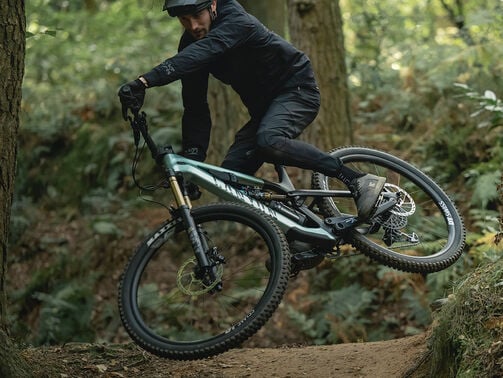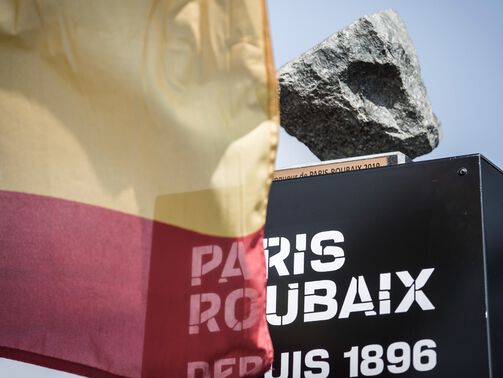Gravel bike tyre pressure: Finding the right balance
When it comes to riding a gravel bike, finding the right tyre pressure can make all the difference in terms of performance, comfort and control.
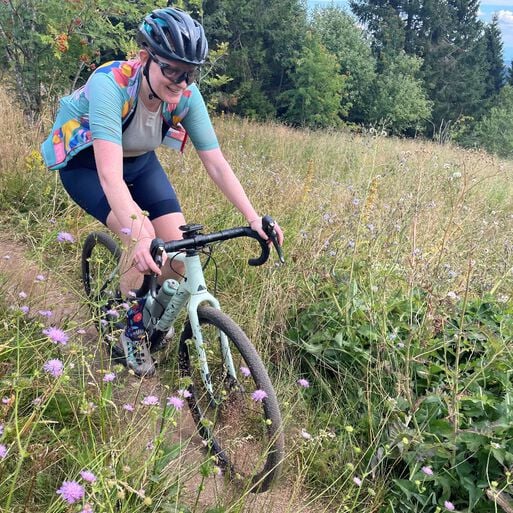
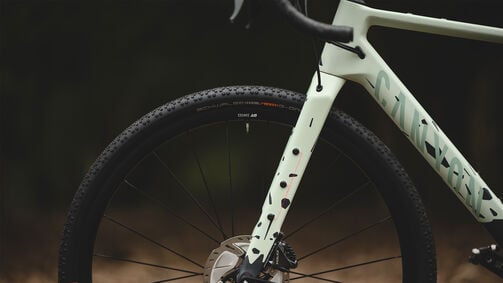
While there is no one-size-fits-all solution, understanding the factors that influence gravel bike tyre pressure can help you determine the best pressure and riding style for your bike and the terrain you intend to ride.
Contents
Why does gravel tyre pressure matter?
The pressure you set your gravel bike tyres to has a big impact on how your bike feels, how it handles, how it copes with obstacles, and how much effort it requires to pedal. It might seem easy to overlook, but it’s impactful. Luckily, it’s also very easy to set up, tweak and adjust using just basic tools – although, like everything in cycling, there’s always a more expensive, fancier tool when you’re ready to upgrade.
Tyre pressure is important in gravel cycling in particular, because you’re tackling bumpy, unpredictable surfaces with variable grip. You’re not quite equipped to roll over anything like you would be on a full-suspension mountain bike, but there’s also a little bit more focus on speed in gravel – especially if you’re racing – and so there is a fine balance to be struck. Check out our article for expert guidance on adjusting your MTB tyre pressure for optimal performance.
Factors that influence gravel bike tyre pressure
Before we dive into specific tyre pressures, it's important to understand the factors that influence tyre pressure for gravel bikes. These factors include:
Rider weight and overall load
The weight of the rider affects how much pressure is needed to support the bike and to maintain proper handling. A heavier rider needs to run their pressures higher than their featherweight riding buddy. In fact, when we think about weight and its relation to gravel bike tyre pressure, we must go beyond just that of the rider. Adding bikepacking bags or a loaded pannier rack to your gravel bike will increase the overall load, and you will need to increase the pressure in your tyres to account for this. If you keep riding at the same tyre pressure but add 20kg of weight to your bike, you may quickly find that the handling is compromised – or even that you are dinging your rim when you hit rocks and tree roots on the trail.
Wheel size, tyre width and inner rim width
26”, 650b, 650c, 700c are all wheel sizes you may encounter. Generally speaking, the smaller wheel sizes run a slightly higher pressure. Narrower tyres also run at higher pressure than wider ones. This is because wider gravel bike tyres have a greater air volume, which allows them to support the same load at a lower pressure. The width of the tyre also impacts how much surface area is in contact with the ground, which can impact grip and rolling resistance. Narrow rims generally need a bit more pressure, to prevent burping or the tyre moving around in the rim bed.
Learn more about bike tyre sizes in our helpful guide.
Tubes or tubeless gravel tyres
Inner tubes can result in pinch-flats when the rim of the wheel impacts with a hard surface. The solution to this is to run the tyres at very high pressure, to try to prevent the rim coming into contact with the inner tube material. This works OK on road bike tyres, but with the much rougher terrain encountered on a gravel bike it can be counter-productive, leading to a jagged and jarring ride feel, and poor control. Tubeless setups all but eliminate the risk of pinch flats and this is why tubeless is much more common on gravel bikes. Tubeless can be run at lower pressures better suited to gravel.
We’ve written a guide for gravel tyres which explains some of the key differences between some of the popular tyre brands.
Terrain and riding style
The type of terrain you're riding on can also impact the ideal tyre pressure. For example, softer surfaces like mud or sand may require lower pressure for better traction, while harder surfaces like hard-packed gravel; may require a high pressure for efficiency. Your preferred riding style, whether it's more aggressive or more leisurely, can also impact the ideal tyre pressure. If you are focused on going fast to the exclusion of comfort, you’ll likely opt for a higher tyre pressure. Conversely, if you want to ride far, or get around with comfort as top priority, then slightly more forgiving, lower gravel bike tyre pressures will suit you best.
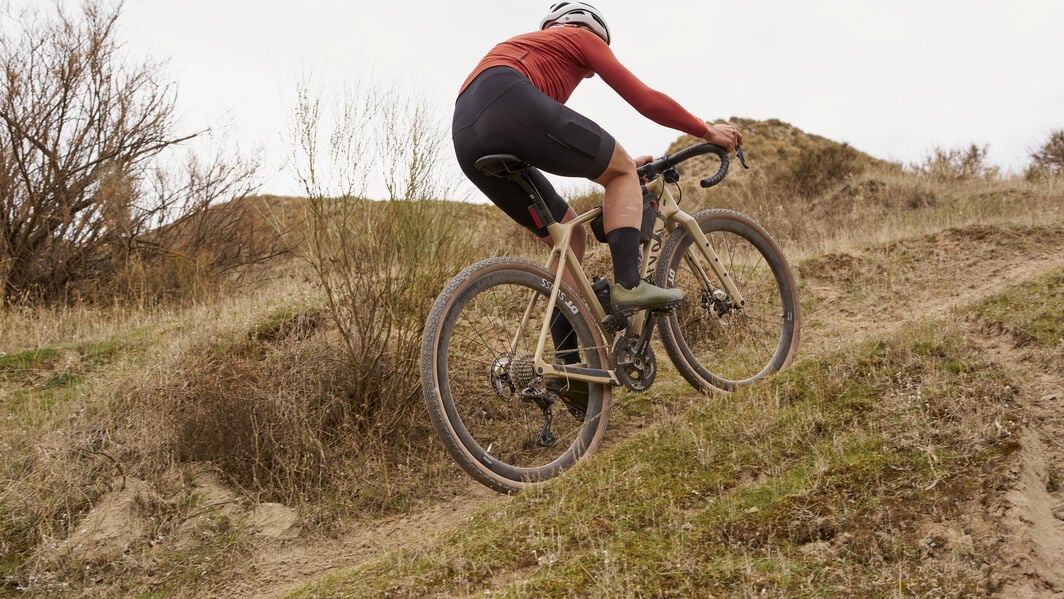
Finding the ideal gravel bike tyre pressure for you
To find the ideal tyre pressure for your gravel bike, consider the factors listed above, and then experiment with different pressures until you find the right balance for your needs.
Perfect gravel bike tyre pressure tips
Here are some general guidelines to get you started:
- Start with the manufacturer's recommended tyre pressure, which is usually listed on the sidewall of the tyre. This will give you a range.
- Adjust the pressure based on your weight. Most online charts range from around 90 lbs to 250lbs. If you’re at the bottom end of the scale, start near the bottom of your tire pressure range, and if you’re closer to the top, start nearer the top of the pressure range.
- Consider the terrain you'll be riding on. For loose or slippery surfaces like mud or gravel, you may want to lower the pressure by 5-10psi for better traction. For harder surfaces like tarmac, you may want to increase the pressure by 5-10psi for better rolling efficiency.
- Fine-tune the pressure based on your riding style. If you prefer a more aggressive riding style, you may want to run slightly higher pressure to get that extra speed. If you prefer a more leisurely riding style, you may want to run slightly lower pressure for better comfort – at the cost of a little bit of extra resistance.
- Bear in mind that you will probably want to run slightly lower pressure on the front than the rear. This is to give optimal traction on the front wheel with slightly better rolling resistance at the rear.
| Tyre Width | Rider Weight | Hardpack/Gravel Roads | Loose Gravel | Mud/Sand |
|---|---|---|---|---|
| 35mm | <140lbs (64kg) | 35-40psi / 2.4-2.8bar | 30-35psi / 2.1-2.4bar | 28-32psi / 1.9-2.2bar |
| 140-180lbs (64-82kg) | 40-45psi / 2.8-3.1bar | 35-40psi / 2.4-2.8bar | 32-35psi / 2.2-2.4bar | |
| >180lbs (82kg) | 45-50psi / 3.1-3.4bar | 40-45psi / 2.8-3.1bar | 35-38psi / 2.4-2.6bar | |
| 40mm | <140lbs (64kg) | 30-35psi / 2.1-2.4bar | 28-32psi / 1.9-2.2bar | 25-30psi / 1.7-2.1bar |
| 140-180lbs (64-82kg) | 35-40psi / 2.4-2.8bar | 30-35psi / 2.1-2.4bar | 28-32psi / 1.9-2.2bar | |
| >180lbs (82kg) | 40-45psi / 2.8-3.1bar | 35-40psi / 2.4-2.8bar | 30-35psi / 2.1-2.4bar | |
| 45mm | <140lbs (64kg) | 28-32psi / 1.9-2.2bar | 25-30psi / 1.7-2.1bar | 22-28psi / 1.5-1.9bar |
| 140-180lbs (64-82kg) | 32-35psi / 2.2-2.4bar | 28-32psi / 1.9-2.2bar | 25-30psi / 1.7-2.1bar | |
| >180lbs (82kg) | 35-40psi / 2.4-2.8bar | 30-35psi / 2.1-2.4bar | 28-32psi / 1.9-2.2bar | |
| 50mm | <140lbs (64kg) | 25-30psi / 1.7-2.1bar | 22-28psi / 1.5-1.9bar | 20-25psi / 1.4-1.7bar |
| 140-180lbs (64-82kg) | 28-32psi / 1.9-2.2bar | 25-30psi / 1.7-2.1bar | 22-28psi / 1.5-1.9bar | |
| >180lbs (82kg) | 30-35psi / 2.1-2.4bar | 28-32psi / 1.9-2.2bar | 25-30psi / 1.7-2.1bar | |

Best tyre pressure for gravel bikes: Using a calculator
If you want a more precise way to calculate the ideal tyre pressure for your gravel bike, there are some gravel bike tyre pressure calculators available online. These calculators take into account your weight, wheel size, rim & tyre width, and riding style to provide a recommended pressure range. To use the calculator, simply enter your weight, tyre size, surface, speed and riding style, and the calculator will provide recommended pressures for both the front and rear tyres.
How to check your gravel bike tyre pressure
Checking your tyre pressure is an essential part of maintaining your gravel bike's performance and safety. Here's how to check your tyre pressure:
- Get a tyre pressure gauge. There are many types of gauges available, including digital, analog and dial gauges. Some pumps even have a built-in gauge. It also helps to check when the tyre is cool – pressure changes as you ride and the tyre heats up.
- Use the methods listed above to find your ideal pressure. Remember, the pressure will vary from ride to ride depending on the conditions and the surface, and on how fast you plan to ride.
- Use the gauge to measure the pressure: Remove the cap from the valve stem and press the gauge onto the valve stem. You should hear a hissing sound as air escapes from the tyre and enters the gauge. Once the gauge has stopped moving, take a reading.
- Adjust the pressure as needed: If the pressure is too high or too low, use a pump with a pressure gauge to add or remove air until the pressure matches your target pressure.
- Check tyre pressure regularly: Tyre pressure can decrease over time, even if there are no visible punctures or leaks. Make it a habit to check both tyres’ pressure before every ride, or at least once a week.
By following these tips and checking your tyre pressure regularly, you can ensure that your gravel bike is performing at its best for all conditions.
Finding the right gravel bike tyre pressure can make a noticeable difference in your ride. By taking into account factors like your weight, tyre width, terrain and riding style, you can dial in a pressure that works best for your needs. Whether you prefer to adjust based on feel or use an online calculator for more precision, experimenting within the recommended range will help you find the sweet spot. Keeping an eye on tyre pressure will help ensure your bike performs well no matter the conditions.
Discover our Gravel Bikes
Did this article help?
Thank you for your feedback
-
 About the author
About the authorGrace Lambert-Smith
Meet Grace, our SEO Copywriter who calls the Peak District National Park home. An experienced long-distance road cyclist, she's now focused on mastering the art of gravel riding and mountain biking. With a passion for telling cycling stories through the written word, Grace is always ready to share her experiences with others.




